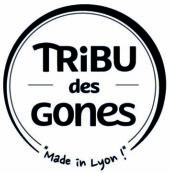Although non-fungible tokens are widely regarded as a new technology, the first NFT was minted in 2014 by digital artist Kevin McCoy and tech entrepreneur Anil Dash. You can trace the origins of NFTs even further back to 2012 when Meni Rosenfeld published the “Colored Coins” whitepaper. “Colored Coins” describes the methodology for representing and managing the ownership of real-world assets on a blockchain. They often change hands using cryptocurrencies, many of which currently have sky-high valuations, leading to fears of a bubble.
How much are NFTs worth?
At a very high level, most NFTs are part of the Ethereum blockchain, though other blockchains have implemented their own version of NFTs. Ethereum is a cryptocurrency, like bitcoin or dogecoin, but its blockchain also keeps track of who’s holding and trading NFTs. In the year since NFTs exploded in popularity, the situation has only gotten more complicated. Pictures of apes have sold for tens of millions of dollars, there’s been an endless supply of headlines about million-dollar hacks of NFT projects, and corporate cash grabs have only gotten worse.
What are non-fungible tokens?
Buyer protections appear to be sparse at best, so when shopping for NFTs, it may be best to keep the old adage “caveat emptor” (let the buyer beware) in mind. In many NFT sales, what the buyer gets is simply the unique entry in the blockchain database that identifies them as the owner of the digital good — the token, rather than the thing the token represents. Non-fungible tokens are also very limited by their liquidity. They attract a specific audience of collectors or buyers because they are much more specific than cryptocurrencies. If you find yourself holding an NFT you no longer want, it might be difficult to find a buyer how to buy on bitrue if that type is no longer popular. The reasoning behind an NFT purchase is likely to vary significantly from one person to another.
- To a collector, they might just be a collection they want to keep.
- Sometimes several are minted that are very similar, but each slightly different, such as a ticket with an assigned seat.
- Although these platforms and others are host to thousands of NFT creators and collectors, be sure you do your research carefully before buying.
- And at the high end of the market — like the Bored Ape Yacht Club, or the NFT collections being auctioned off by Sotheby’s for millions of dollars — a lot of the value boils down to speculation and bragging rights.
It’s generally built using the same kind of programming as cryptocurrency, like Bitcoin or Ethereum, but that’s where the similarity ends. NFTs are also generally one of a kind, or at least one of a very limited run, and have unique identifying codes. “Essentially, NFTs create digital scarcity,” says Arry Yu, chair of the Washington Technology Industry Association Cascadia Blockchain Council and managing director of Yellow Umbrella Ventures.
They are bought and sold online, frequently with cryptocurrency, and they are generally encoded with the same underlying software as many cryptos. For starters, NFTs are personal property, in a way most other digital goods aren’t. But NFTs live in their owners’ crypto wallets, which aren’t chained coinbase cryptocurrency exchange review to any particular platform, and they can use them any way they choose.
The best deals from Amazon’s October Prime Day sale
As tokens are minted, they are assigned a unique identifier directly linked to one blockchain address. Each token has an owner, and the ownership information (i.e., the address in which the minted token resides) is publicly available. Even if 5,000 NFTs of the same exact item are minted (similar to general admission tickets to a movie), each token has a unique identifier and can be distinguished from the others. The ERC-1155 standard, approved six months after ERC-721, improves upon ERC-721 by batching multiple non-fungible tokens into a single contract, reducing transaction costs. Once that capacity is reached, the block closes and links to the preceding block via cryptography, creating a chain.
In other words, investing in 10 best cryptocurrency exchange platforms of 2020 NFTs is a largely personal decision. If you have money to spare, it may be worth considering, especially if a piece holds meaning for you. You’ll want to keep fees in mind as you research options.
Once they’re released or “minted,” these NFTs become a kind of digital collectible, and a membership card to an exclusive club. Many NFT groups have their own chat rooms on the Discord messaging app, where owners hang out and talk among themselves. Some community NFT projects even organize offline events and parties, which you can only get into by proving that you own one of their NFTs. Non-fungible tokens are also very useful in identity security. For example, personal information stored on an immutable blockchain cannot be accessed, stolen, or used by anyone who doesn’t have the keys. Perhaps the most famous use case for NFTs is that of cryptokitties.
